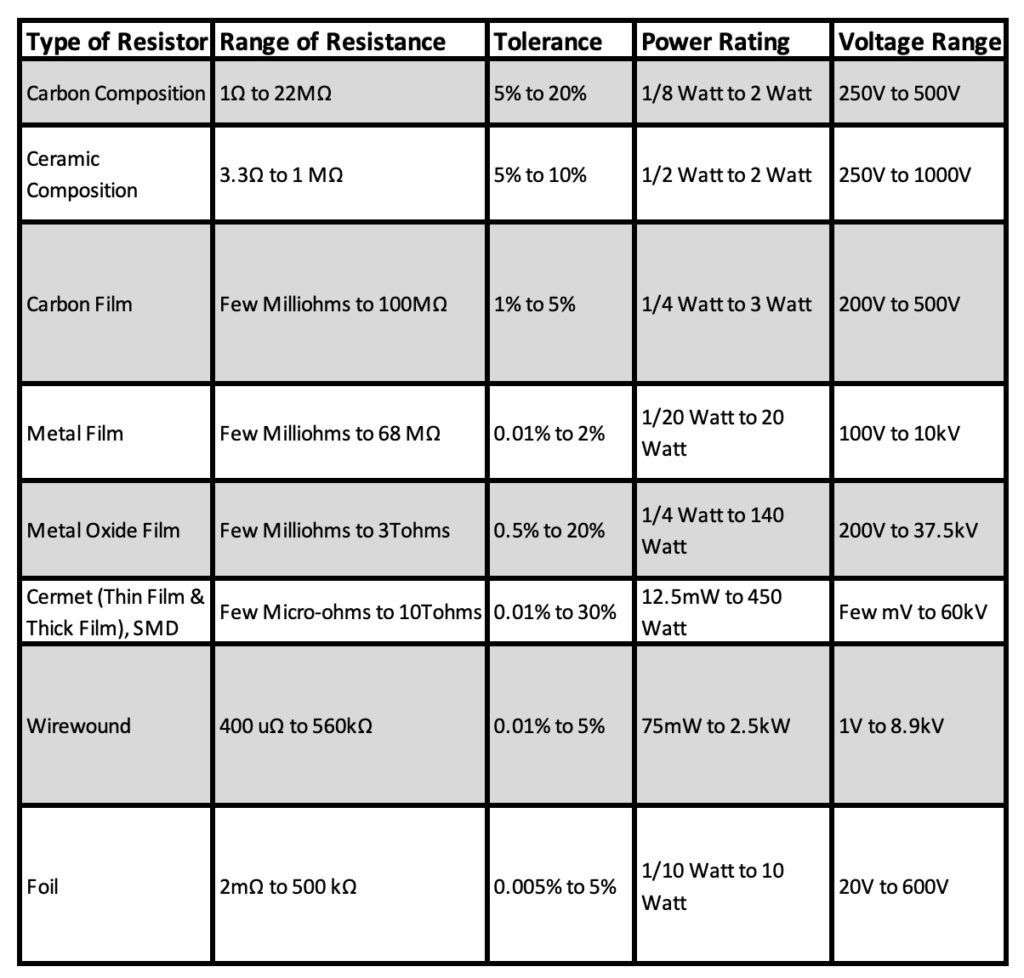We have already discussed the various properties of resistors and different types of resistors. Now, it’s time to know how a resistor must be selected for a given application. Here, we present a cheat sheet here for the selection of resistors that can serve as a quick reference anytime.
The process of selecting a resistor for a given application involves the following steps:
- First of all, ascertain which type of resistor will be suitable for the given application or circuit.
- Choose a value for the resistor by doing quick circuit analysis. Check out if the exact value of that resistor comes available. If not, what parallel or series combination of resistances will be equivalent to the required resistance.
- Verify the properties of the resistor like nominal value, tolerance, power rating and other properties if required. Accordingly, pick the right resistor.
- Practically test the properties of the resistor like actual resistance offered by it, resistance offered by the resistor in the circuit, voltage drop, current through it, power dissipation by it and other properties if required according to the requirements of the given circuit.
For most of the regular circuits, 1/4 or 1/2 W carbon composition or carbon film resistors are sufficient. For power applications (More than 5 Watt), wirewound resistors usually fit the bill. This remains thumb rule, until, you are testing circuits for hobby. The commercial circuits or professionally designed circuits involves a wide picture, even in case, as trivial as, selecting a resistor for the circuit. The professional circuits need careful selection of resistors and may even involve scrutinizing of datasheets from the manufacturer of the resistor. So, let’s have a glimpse of professional way of selecting a resistor for a given application.
Selecting type of Resistor –
The properties of different types of resistors are summarized in the following table –
How to use the Resistor Selection Reference Table –
Click here for a pdf of the Required Power Rating table
1) First of all, calculate the power requirement of the desired resistor. A resistor of at least twice the calculated power dissipation must be selected. If it is a power application, the resistor of at least three or four times the calculated power dissipation must be selected.
2) After deriving the required power range (in Watts), look for if the circuit requires SMT or through-hole mounting.
3) Next, check out the required tolerance.
4) Then, verify the maximum temperature rating.
5) Next, look for special conditions, like high-frequency application, power application, pulse power application or suitability to high frequency or high power applications.
6) Finally, check if the desired resistance is available for the selected resistor type.
In the next article, we will learn about reading value, tolerance and power rating of resistors.
Filed Under: Featured Contributions



Questions related to this article?
👉Ask and discuss on Electro-Tech-Online.com and EDAboard.com forums.
Tell Us What You Think!!
You must be logged in to post a comment.